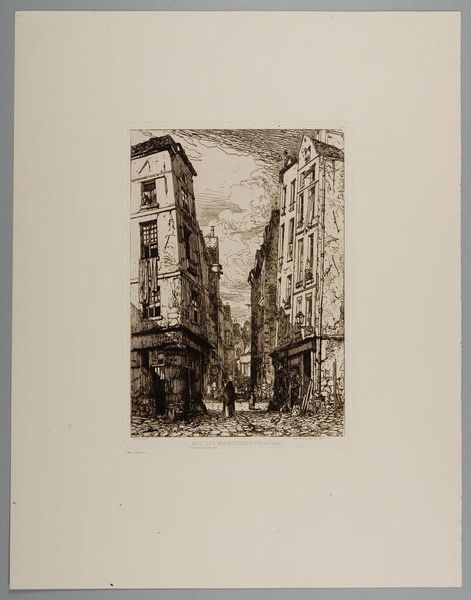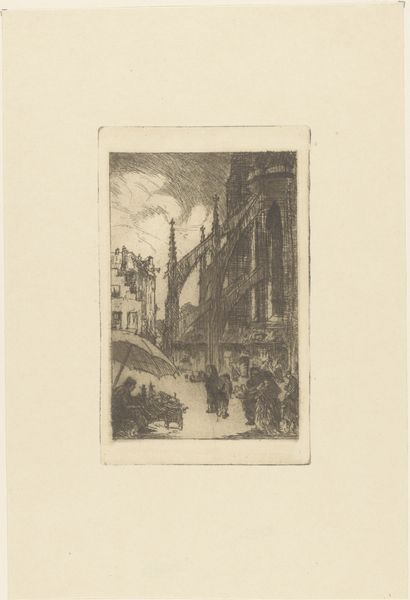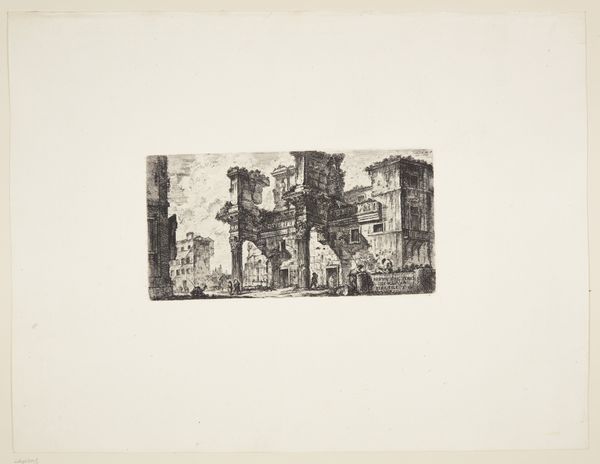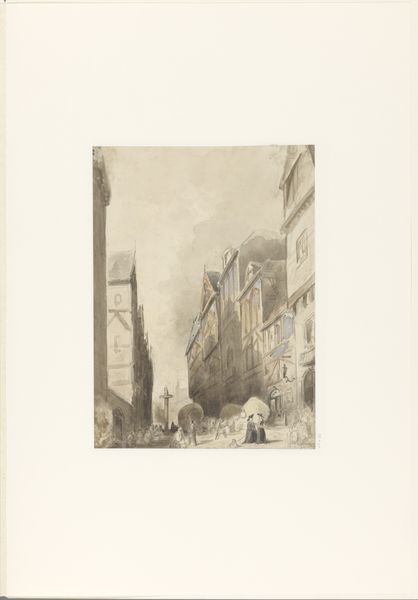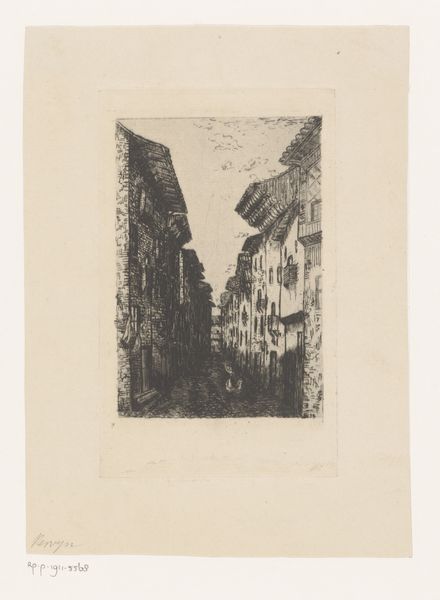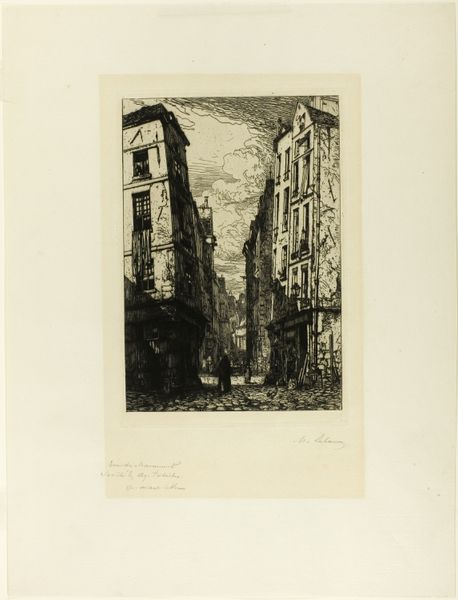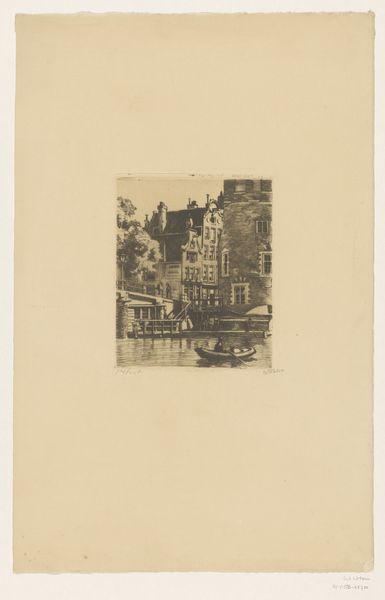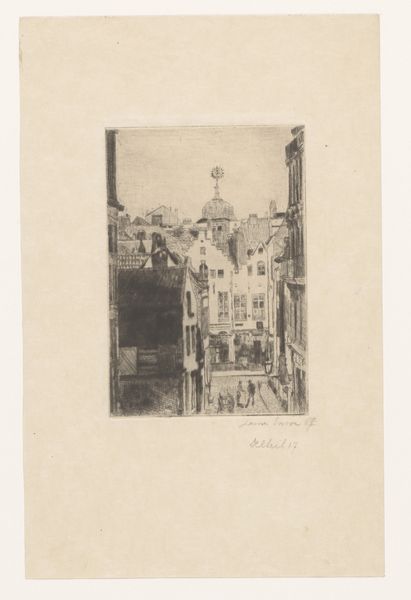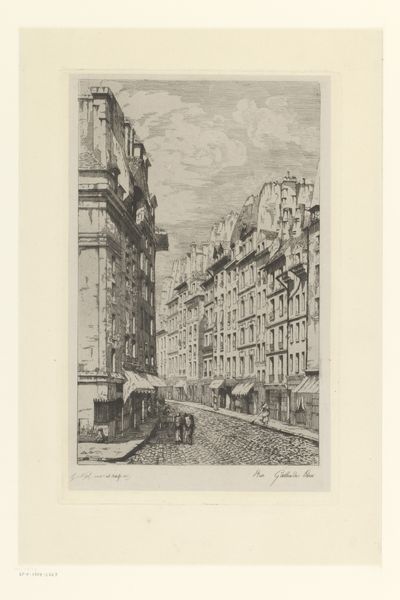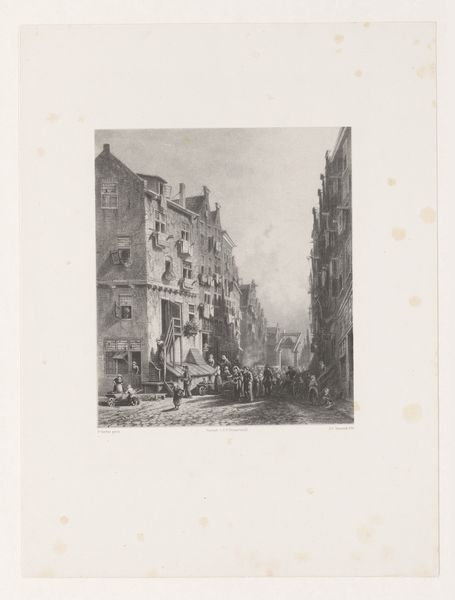
drawing, print, etching
#
photo of handprinted image
#
drawing
# print
#
etching
#
cityscape
#
realism
Dimensions: height 154 mm, width 107 mm
Copyright: Rijks Museum: Open Domain
Curator: Here we have Alexander Schaepkens' "Kersenmarkt te Maastricht," an etching dating somewhere between 1830 and 1899. The Rijksmuseum holds this impression of the print in its collection. Editor: Ah, Maastricht! Immediately, it feels like a memory, faded and a bit blurry. Like peering through a rain-streaked window onto a simpler time. The blacks are intense, creating an urban landscape brimming with shadowy undertones. Curator: I'd say that reading is astute. Etchings like these can be incredibly revealing about the socio-economic landscapes of their time. Urban spaces were, and are, so important. Editor: Exactly! I mean, what are those dark spots—figures moving in the distance, or are they merely street debris and detritus from the cherry market, detritus and shadows mingling together? Curator: More than likely they depict the movement and bustle, reflecting the heart of civic engagement—a place, quite literally, of trade and interaction. You will also find evidence of rapid social changes occurring and reflected. Editor: So true. Notice how the buildings almost lean into each other as if exchanging gossip? It's such an intimate snapshot, even though it depicts something so public. The artist has this amazing grasp, like capturing an unheard melody. Curator: You touched upon something critical to me: public space as inherently a stage for social relations. Now, when considering questions of public space and accessibility, this kind of seemingly straightforward snapshot can yield compelling inquiries into class, visibility, and even power. It also seems worth mentioning how this all fits into the framework of Dutch Realism. Editor: Oh absolutely, like capturing the city's very soul in that swirling darkness. It invites us to consider our own memories of spaces and imagine Maastricht then versus now. Curator: A lens through which we can look back at ourselves, as well, given that cities—past and present—reflect our societies in a fascinating visual format. Editor: Right? Maybe that is the essence of etching. This one distills time itself into a dark wash that lingers. I guess its the shadows... It certainly is magic.
Comments
No comments
Be the first to comment and join the conversation on the ultimate creative platform.

